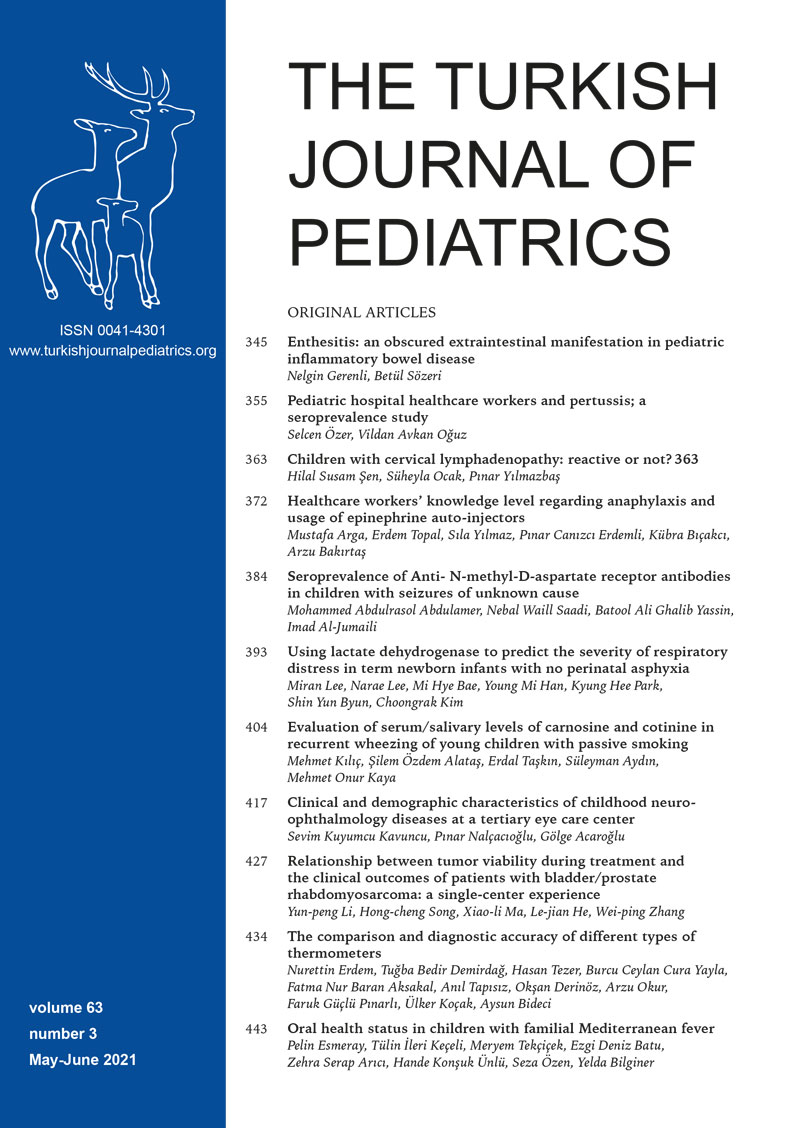Abstract
Background. Inadequate practices in diagnosis and management of anaphylaxis in parallel with an increase in its prevalence may cause serious public health problems today. This is the first study aiming to assess the theoretical knowledge of professional and non-professional healthcare workers from different lines of the healthcare service chain about anaphylaxis management, and their practice approaches for epinephrine autoinjectors (EAIs) together.
Methods. The study included 697 participants comprising physicians, dentists, pharmacists, and school staff. In face-to-face interviews, each participant was asked to fill out the questionnaire forms prepared for assessing their demographic characteristics, experience with a case of anaphylaxis and EAI and theoretical knowledge about the diagnosis and treatment of anaphylaxis, and to demonstrate how to use EAI in practice with trainer device.
Results. The rates of 391 physicians, 98 dentists, 102 pharmacists and 105 school staff of knowing the diagnosis criteria of anaphylaxis were 47.6%, 31.6%, 31.1%, 19%, and knowing the first and life-saving treatment of anaphylaxis were 87.2%, 79.6%, 47.6%, 15.2%, respectively. Predictors that affected physicians in knowing the first and life-saving treatment of anaphylaxis were having experience with EAIs [OR:5.5, (%95CI:1.330-23.351, p=0.015)] and a case of anaphylaxis [OR:2.4, (%95CI:1.442-4.020, p=0.001)], and knowing the administration route of epinephrine correctly [OR:1.9, (%95CI:1.191-3.314, p=0.008)]. 31.1% of the participants demonstrated the EAI usage correctly. The EAI usage steps with the most errors were `Place the appropriate injection tip into outer thigh/Press the trigger so it `clicks`` and `Turn the trigger to arrow direction` (60.3% and 34.9%, respectively).
Conclusions. Healthcare workers` knowledge level regarding anaphylaxis management and ability to use EAIs correctly are not adequate. That most errors were made in the same steps of EAI usage indicates that the industry should continue to strive for developing the ideal life-saving device.
Keywords: anaphylaxis, epinephrine auto-injectors, healthcare workers, knowledge, management
Copyright and license
Copyright © 2021 The Author(s). This is an open access article distributed under the Creative Commons Attribution License (CC BY), which permits unrestricted use, distribution, and reproduction in any medium or format, provided the original work is properly cited.














